×
SparkFun will be closed Nov. 28th and Nov. 29th in observance of Thanksgiving. Any orders qualifying for same day shipping placed after 2:00 p.m. MST on Wednesday, Nov 27th will be processed on Monday, Dec 1st. Wishing you a safe and happy holiday weekend from all of us at SparkFun!
Back in August, Raspberry Pi launched the Raspberry Pi Pico 2 with the onboard RP2350 microcontroller. At the same time, SparkFun came out with the SparkFun Pro Micro - RP2350. Both sold out quickly and it took some time to get them back in stock. Now that we have healthy stock of both the Pico 2 and the Pro Micro - RP2350 we thought we'd go through the technical differences between Raspberry Pi's RP2350 and its predecessor, the RP2040.

Overview of the RP2040
The RP2040 chip, introduced in January of 2021 alongside the original Raspberry Pi Pico, was a groundbreaking entry into the microcontroller market by Raspberry Pi. It featured:
- Dual-core ARM Cortex-M0+: Operating at 133 MHz, the RP2040 provided ample power for a variety of embedded applications.
- 264kB of SRAM: Sufficient memory for lightweight applications and real-time tasks.
- 2MB of Flash memory: Provided ample storage for most embedded projects.
- 30 GPIO Pins: Including programmable IO (PIO) for flexible, custom peripherals.
- USB 1.1 Device and Host Support: Allowing for basic connectivity options.
- 2 × Programmable IO (PIO) blocks, 8 state machines total: Enabling custom peripheral implementations such as SD Card and VGA. These features made the RP2040 an excellent choice for hobbyists and professionals alike, offering an affordable platform for a wide range of applications.
Products offering the RP2040
Overview of the RP2350
The RP2350, the heart of the Raspberry Pi Pico 2, builds upon the strengths of the RP2040 while introducing several enhancements:
- Dual ARM CortexM33 and Hazard3 RISC-V Processors at 150 MHz: A significant boost in clock speed, offering improved performance for more demanding applications. Users can select two processors to run on boot.
- 520kB of SRAM: An increase in memory, supporting more complex operations and larger datasets.
- Up to 16 MB of external QSPI flash/PSRAM: Accessible via optional second chip-select catering to applications that require more extensive codebases or data logging.
- 30-48 GPIO Pins (depending on model): Expanding the I/O options, offering more flexibility in interfacing with external hardware.
- 12 Programmable IO (PIO) state machines: Increasing the number of custom peripheral implementations that can be run simultaneously.
- Optional RISC-V Cores: Unique to the RP2350, users can choose between dual ARM Cortex-M33 cores and dual Hazard3 RISC-V cores, offering flexibility in architecture choice.
- Advanced Security Features: Includes Arm TrustZone for Cortex-M, signed boot, 8kB of antifuse OTP for key storage, SHA-256 acceleration, a hardware TRNG, and fast glitch detectors, providing robust security options for professional-grade applications.
The RP2350’s advanced security features and dual-core, dual-architecture capability highlight its suitability for professional and industrial applications, while still retaining the accessibility and affordability that made the original Raspberry Pi Pico so popular.
See Full RP2350 Datasheet
Products offering the RP2350
Key Differences
To provide a clearer view of the advancements, here’s a comparison table highlighting the main differences of the RP2040 and RP2350 chips:
| Feature | RP2040 | RP2350 |
|---|---|---|
| Processor | Dual-core ARM Cortex-M0+ at 133 MHz | ARM® Cortex® M33 processors and two Hazard3 RISC-V processors at 150 MHz (user-selectable for dual-cores) |
| SRAM | 264kB | 520kB (in 10 banks) |
| Internal Flash Memory | 2MB | 0/2MB (model dependent) |
| GPIO Pins | 30 | 30—48 |
| USB Support | USB 1.1 Device and Host | USB USB 1.1 controller and PHY, with host and device support |
| Programmable IO (PIO) | 8 state machines | 12 state machines |
| Security Features | No security features | Arm TrustZone, signed boot, 8kB antifuse OTP, SHA-256 acceleration, hardware TRNG, glitch detectors |
Performance and Security Implications
The increase in clock speed from 133 MHz to 150 MHz in the RP2350 translates to a noticeable performance boost, particularly beneficial in real-time applications. The optional RISC-V cores offer flexibility in processing architecture, catering to various application needs. Additionally, the enhanced security features make the RP2350 suitable for applications requiring robust protection against tampering and unauthorized access.
Conclusion
The RP2350 chip offers significant upgrades over the RP2040, making it a strong candidate for more demanding embedded applications. Whether you’re developing a new project or looking to upgrade an existing one, the enhancements in performance, memory, I/O options, security, and architectural flexibility make the Raspberry Pi Pico 2 a compelling choice moving forward.
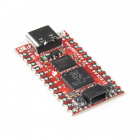
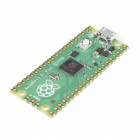
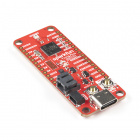
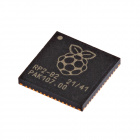

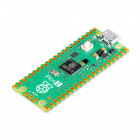






Something does not add up here. According to the RP2350 datasheet on RPi site, RP2350 has:
That does not match the numbers quoted in the article. It would be useful if the article would include a link to the reference info for the chip. The product page of "SparkFun Pro Micro - RP2350" seems to agree with the datasheet, so this looks like a problem with the article.
In addition to the parts you highlighted, the M33 core not the same as the M0+, as it's described as being in the article
Thanks for the heads up! It looks like we went live with the 1st draft 🤦 I've got it updated now and will double check the specs again.
More corrections: According to the datasheet RP2350 has no internal flash not 4MB as stated here. The RP2354 has 2MB of internal flash.
Yep you are correct. I mistakenly took the spec from the Pico 2 board itself which states "Raspberry Pi Pico 2 comes with all the features of RP2350A, along with 4MB of on-board flash memory, packaged in a user-friendly form factor."
The RP2350 is still USB 1.1, not 2.0 as stated in the article. I am sure I wouldn't have spent a few hours reading about ULPI trying to see if it would be possible to implement through PIO otherwise.
Apologies for my confusion. I was deep in the datasheet (page 1137) where this line gave the impression of USB 2.0 capabilities.
"RP2350 contains a USB 2.0 controller that can operate as either: - a Full Speed (FS) device (12 Mb/s) -a host that can communicate with both Low Speed (LS) (1.5 Mb/s) and Full Speed devices, including multiple downstream devices connected to a USB hub"
It also states: "In Device Mode, the USB controller has the following characteristics: -USB 2.0-compatible Full Speed device (12 Mb/s)"
Probably going to be the last time I write about technical specs. I'll leave that to the experts from now on :)
only one way to become an expert ... just do it